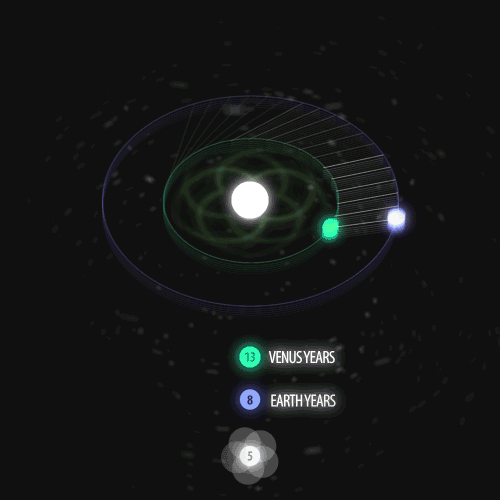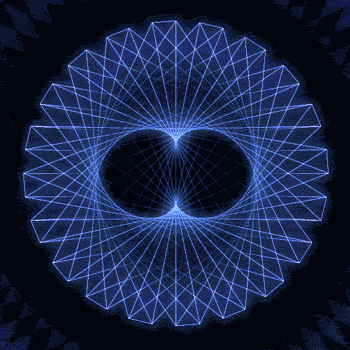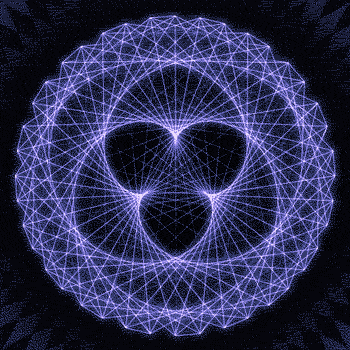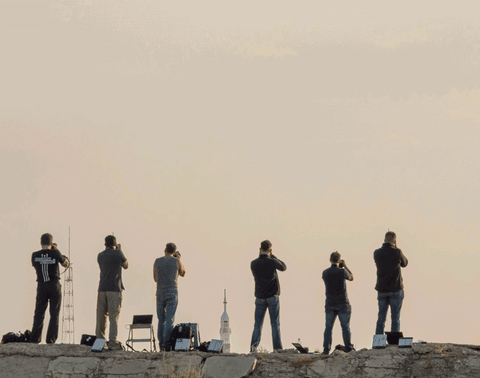sciencephysics4all-blog
http://sciencephysics4all.com/
31 posts
Latest Posts by sciencephysics4all-blog

See Red Spot nearby photos from NASA's Juno Mission to Jupiter! https://goo.gl/oh2WAK

Το Αιγαίο από το διάστημα! Το φαινόμενο sunglint στο Αιγαίο από το διαστημοσυσκευή MODIS της NASA via NASA Earth. Διαβάστε περισσότερα εδώ: https://goo.gl/LqUgJJ

A hypotrochoid is a roulette traced by a point P attached to a circle of radius b rolling around the inside of a fixed circle of radius a, where P is a distance h from the center of the interior circle. The parametric equations for a hypotrochoid are:
x=(a-b)cost + hcos[(a-b)t/b] y=(a-b)sint + hsin[(a-b)t/b]

#sciphy4all #science #physics #photon #black #hole #blackhole #joke


A ferrofluid clock #sciphy4all #science #physics #ferrofluid #clock

Poker game #sciphy4all #science #physics #programming #computer #computers #pc#perl #python #basic #c #javascript #php #java

#sciphy4all #science #physics #english #important#importanter

Quantum phenomenon in neutron star (video) https://goo.gl/OcDlcz

Help the Association of Astrophysics of Asea (https://www.facebook.com/astroasea/) to build an Astronomical Observatory in Asea, Arcadia, Greece! Donations made via Jump Start (http://www.jumpstartgreece.com/projects/arcadian-astronomical-observatory-astro-tourism/)! http://www.sciencephysics4all.com/902rhothetarhoalpha1/arcadian-astronomical-observatory-astro-tourism
Βοήθησε και εσύ τον Σύλλογο Αστροφυσικής Ασέας (https://www.facebook.com/astroasea/) να κατασκευάσει ένα Αστεροσκοπείο στην Ασέα Αρκαδίας! Οι δωρεές γίνονται μέσω της ιστοσελίδας Jump Start (http://www.jumpsttgreece.com/projects/arcadian-astronomical-observatory-astro-tourism/)!

Merry Christmas with geometry!

Thermal Processes with Ideal Gas

Τεστ γνώσεων!
Kirk vs. Spock: NASA Trivia Time!
Star Trek has inspired generations of NASA employees to boldly go exploring strange new worlds and develop the technologies for making science fiction become science reality. We recently caught up with Star Trek Beyond actors Chris Pine (Kirk) and Zachary Quinto (Spock) and quizzed them on some NASA trivia. Before you take a look at their answers (video at bottom of post), take a stab at answering them yourself! See how well you do:

1. What does the first “A” in NASA stand for? A) Adventure B) Aeronautics
2. On July 4 this year, we sent a spacecraft into orbit around what planet? A) Jupiter B) Pluto
3. What do scientists call a planet that orbits a star outside our solar system? A) Exoplanet B) Nebula
4. Although it never flew in space, what was the name of the first space shuttle? A) Discovery B) Enterprise
5. What is a light-year a measurement of? A) Time B) Distance
6. When looking for habitable worlds around other stars, we want to find planets that are what? A) Goldilocks zone planets B) Class M Planets
7. Olympus Mons is the largest known volcano in our solar system. What planet is it on? A) Mars B) Earth
8. Which NASA satellite made an appearance in Star Trek the Motion Picture? A) Voyager B) Galileo
9. Who was the first American woman in space? A) Sally Ride B) Janice Lester
10. While developing life support for Mars missions, what NASA Spinoff was developed? A) Enriched baby food B) Anti-gravity boots
11. What technology makes replication of spare parts a reality on the International Space Station? A) Closed-Loop System B) 3-D Printer
12. What two companies are contracted by NASA to carry astronauts to and from the space station? A) Boeing and SpaceX B) Amazon and Virgin Galactic
ANSWERS: 1:B, 2:A, 3:A, 4:B, 5:B, 6:A, 7:A, 8:A, 9:A, 10:A, 11:B, 12:A
Now that you’ve tested your own space knowledge, find out how Zachary and Chris did at NASA Trivia:
Learn more about NASA + Star Trek at: http://www.nasa.gov/startrek
Make sure to follow us on Tumblr for your regular dose of space: http://nasa.tumblr.com
The history of Hubble - Η ιστορία του διαστημικού τηλεσκοπίου που έχει γράψει ιστορία με τις φωτογραφίες του, Hubble.
Can You #SpotHubble?
Hey Tumblr! We’re Inviting You to #SpotHubble

Since its launch in 1990, the Hubble Space Telescope has sent back mind-blowing images that not only changed our understanding of our universe, but also changed where we see our universe.

Hubble is more than a science instrument; it’s a cultural phenomenon! Take a moment to think about where you’ve seen the Hubble Space Telescope or Hubble images in your daily life.

Maybe you walk by a mural inspired by Hubble images everyday on your way to work.

Perhaps you’ve even created art based on Hubble images.

We want to see the Hubble impact in your life! Share your photos with us on Instagram, Twitter, Flickr and Facebook. If a #SpotHubble image catches our eye, we may share your post on our NASA Hubble social media accounts.

Here’s how to #SpotHubble!
There are four social media platforms that you can use to submit your work:
Flickr: Submit your photos to the Spot Hubble Flickr Group
Instagram: Use the Instagram app to upload your photo, and in the description include #SpotHubble and #NASAGoddard
Twitter: Share your image on Twitter and include #SpotHubble in the tweet
Facebook: Share your image on Facebook and include #SpotHubble in the post
Please note, submissions are subject to certain terms and conditions.
Make sure to follow us on Tumblr for your regular dose of space: http://nasa.tumblr.com
Optical illusions #sciphy4all #science #physics #optical #illusion #opticalillusion #Kokichi #Sugihara #KokichiSugihara #opticalillusions #optical_illusion
While many eyes are on the rocket Kim just launched at Taylor, SpaceX was busy sending a payload up to ISS and and trying out another experimental landing of a rocket.
And SpaceX succeeded! The first stage segment of the Falcon 9 rocket successfully landed in Cape Canaveral only about 5 minutes after launching.
While SpaceX has been having a some success landing rockets, this is one of the first instances of it doing so while performing a NASA-contracted ISS delivery.

Biochemists at the University of California San Diego have developed artificial cell membranes that grow and remodel themselves in a manner similar to that of living mammalian cells.
The achievement, detailed in a paper published in this week’s issue of the Proceedings of the National Academy of Sciences, follows the successful design last year in the same laboratory of artificial, or synthetic, cell membranes capable of sustaining continual growth. The two developments now bring the researchers closer to mimicking all of the properties of living mammalian cell membranes with synthetic components.
That’s important because synthetic membranes that accurately mimic the behavior of living mammalian cell membranes could be used by biomedical researchers to develop more effective drugs that target membrane proteins and better understand the chemical changes that occur in dysfunctional membranes during disease.
“While artificial membranes have been used to model the properties of native membranes, previous methods have not been able to mimic lipid membrane remodeling,” said Neal Devaraj, an associate professor of chemistry and biochemistry at UC San Diego who headed the research team for both studies. “In our latest study, we show that reversible chemical reactions can be harnessed to achieve spontaneous remodeling of lipids in synthetic membranes.”
Continue Reading.





Saturn in different wavelengths.
1) Ultraviolet
2) Infrared
3) Infrared
4) X-Ray and Optical
5) Optical





Fibonacci you crazy bastard….
As seen in the solar system (by no ridiculous coincidence), Earth orbits the Sun 8 times in the same period that Venus orbits the Sun 13 times! Drawing a line between Earth & Venus every week results in a spectacular FIVE side symmetry!!
Lets bring up those Fibonacci numbers again: 1, 1, 2, 3, 5, 8, 13, 21, 34..
So if we imagine planets with Fibonacci orbits, do they create Fibonacci symmetries?!
You bet!! Depicted here is a:
2 sided symmetry (5 orbits x 3 orbits)
3 sided symmetry (8 orbits x 5 orbits)
5 sided symmetry (13 orbits x 8 orbits) - like Earth & Venus
8 sided symmetry (21 orbits x 13 orbits)
I wonder if relationships like this exist somewhere in the universe….
Read the Book | Follow | Hi-Res -2- -3- -5- -8-

LIFTOFF!
On July 7, three crew members launched from Earth; headed to their new home on the International Space Station.
Crewmembers Kate Rubins of NASA, Anatoly Ivanishin of Roscosmos and Takuya Onishi of the Japan Aerospace Exploration Agency (JAXA) will spend approximately four months on the orbital complex, returning to Earth in October.
Photo Credit: (NASA/Bill Ingalls)
Make sure to follow us on Tumblr for your regular dose of space: http://nasa.tumblr.com
Edison’s Cradle?

Supplementing the Newton’s Cradle post, Behold the Edison’s cradle ! :)
As part of his senior thesis exhibition at Musashino Art University in Tokyo, art student Yasutoki Kariya re-imagined the ubiquitous desktop gadget, Newton’s Cradle, using a lovely sequence of light bulbs.
Entitled Asobi(which translates roughly as “playing“) the 11-bulb installation creates a visual interpretation of the popular toy named after Sir Isaac Newton demonstrating his third law of motion regarding momentum: that for every action there is an equal and opposite reaction.

The ingenious deception.
However, instead of actual energy created by the kinetic force of steel balls, Kariya devised a method for using programmed light and two surreptitiously placed pistons to create this purely visual experience that’s arguably more mesmerizing than the original concept.
Juno: Inside the Spacecraft

Our Juno spacecraft was carefully designed to meet the tough challenges in flying a mission to Jupiter: weak sunlight, extreme temperatures and deadly radiation. Lets take a closer look at Juno:
It Rotates!

Roughly the size of an NBA basketball court, Juno is a spinning spacecraft. Cartwheeling through space makes the spacecraft’s pointing extremely stable and easy to control. While in orbit at Jupiter, the spinning spacecraft sweeps the fields of view of its instruments through space once for each rotation. At three rotations per minute, the instruments’ fields of view sweep across Jupiter about 400 times in the two hours it takes to fly from pole to pole.
It Uses the Power of the Sun

Jupiter’s orbit is five times farther from the sun than Earth’s, so the giant planet receives 25 times less sunlight than Earth. Juno will be the first solar-powered spacecraft we’ve designed to operate at such a great distance from the sun. Because of this, the surface area of the solar panels required to generate adequate power is quite large.

Three solar panels extend outward from Juno’s hexagonal body, giving the overall spacecraft a span of about 66 feet. Juno benefits from advances in solar cell design with modern cells that are 50% more efficient and radiation tolerant than silicon cells available for space missions 20 years ago. Luckily, the mission’s power needs are modest, with science instruments requiring full power for only about six out of each 11-day orbit.
It Has a Protective Radiation Vault

Juno will avoid Jupiter’s highest radiation regions by approaching over the north, dropping to an altitude below the planet’s radiation belts, and then exiting over the south. To protect sensitive spacecraft electronics, Juno will carry the first radiation shielded electronics vault, a critical feature for enabling sustained exploration in such a heavy radiation environment.
Juno Science Payload:
Gravity Science and Magnetometers – Will study Jupiter’s deep structure by mapping the planet’s gravity field and magnetic field.

Microwave Radiometer – Will probe Jupiter’s deep atmosphere and measure how much water (and hence oxygen) is there.

JEDI, JADE and Waves – These instruments will work to sample electric fields, plasma waves and particles around Jupiter to determine how the magnetic field is connected to the atmosphere, and especially the auroras (northern and southern lights).
JADE and JEDI

Waves

UVS and JIRAM – Using ultraviolet and infrared cameras, these instruments will take images of the atmosphere and auroras, including chemical fingerprints of the gases present.
UVS

JIRAM

JunoCam – Take spectacular close-up, color images.

Follow our Juno mission on the web, Facebook, Twitter, YouTube and Tumblr.
Make sure to follow us on Tumblr for your regular dose of space: http://nasa.tumblr.com
What’s Up for July 2016?

What’s Up for July? Use Saturn as your guide to a tour of the summer Milky Way.

Saturn continues to dazzle this month. Its wide rings and golden color provide a nice contrast to nearby Mars and Antares. Below Saturn lies the constellation Scorpius, which really does look like a scorpion!

Through binoculars or telescopes you’ll be able to spot two pretty star clusters: a compact (or globular) cluster, M-4, and an open cluster, M-7. M-7 is known as Ptolemy’s cluster. It was observed and cataloged by Greek-Egyptian astronomer Ptolemy in the first century.

Climbing north, you’ll be able to spot the teapot shape which forms part of the constellation Sagittarius. The center of the Milky Way is easy to see. It looks like bright steam rising from the teapot’s spout.

With difficulty, a good star chart and a medium-sized telescope you can locate faint Pluto in the “teaspoon” adjacent to the teapot.

A binocular tour of this center core of the Milky Way reveals many beautiful summer sky objects. We first encounter the Eagle Nebula, M-16. Part of this nebula is featured in the famous and beautiful “Pillars of Creation” images taken by our Hubble Space Telescope.

You’ll have to stay up later to see the northern Milky Way constellations, which are better placed for viewing later in the summer and fall. Cygnus the swan features the prettiest supernova remnant in the entire sky, the Veil Nebula. It’s too big to fit in one eyepiece view, but luckily there are three sections of it.

Look between Aquila and Cygnus to find three tiny constellations: Delphinus the dolphin, Vulpecula the fox and Lyra the lyre (or harp). M-57, the Ring Nebula, is the remains from a shell of ionized gas expelled by a red giant star into the surrounding interstellar medium. It’s pretty, too! Look in Vulpecula for the Dumbbell, another planetary nebula.

We’ll end our summer tour with Lacerta the lizard and Draco the Dragon. Lacerta is home to a star with an extrasolar planet in its orbit, and Draco, facing away from the center of our Milky Way, is a treasure trove of distant galaxies to catch in your telescope.
Watch the full What’s Up for July 2016 video HERE.
You can catch up on current missions and space telescopes studying our Milky Way and beyond at www.nasa.gov.
Make sure to follow us on Tumblr for your regular dose of space: http://nasa.tumblr.com
Five Things to Know About NASA Astronaut Kate Rubins

Among the newest crew on the International Space Station is U.S. astronaut Kate Rubins, who will assume the role of Flight Engineer for Expeditions 48 and 49. Here are five things you should know about her:
1. She was chosen from a pool of over 3,500 applicants to receive a spot on our 2009 astronaut training class.

After being selected, Rubins spent years training at Johnson Space Center to become an astronaut. She learned how to use the complex station systems, perform spacewalks, exercise in space and more. Some training even utilized virtual reality.
2. She has a degree in cancer biology.

After earning a Bachelor of Science degree in Molecular Biology from the University of California, San Diego in 1999, Rubins went on to receive a doctorate in Cancer Biology from Stanford University Medical School Biochemistry Department and Microbiology and Immunology Department in 2005. In other words, she’s extremely smart.
3. Her research has benefited humanity.

Rubins helped to create therapies for Ebola and Lassa viruses by conducting research collaboratively with the U.S. Army. She also aided development of the first smallpox infection model with the U.S. Army Medical Research Institute of Infectious Diseases and the Centers for Disease Control and Prevention. NBD. It will be exciting to see the research come out of a mission with a world-class scientist using a world-class, out-of-this-world laboratory!
4. She is scheduled to be the first person to sequence DNA in space.

During her time at the space station, Rubins will participate in several science experiments. Along with physical science, Earth and space science and technology development work, she will conduct biological and human research investigations. Research into sequencing the first genome in microgravity and how the human body’s bone mass and cardiovascular systems are changed by living in space are just two examples of the many experiments in which Rubins may take part.
5. In her spare time, she enjoys scuba diving and triathlons…among other things.

Rubins was on the Stanford Triathlon team, and also races sprint and Olympic distance. She is involved with health care/medical supply delivery to Africa and started a non-profit organization to bring supplies to Congo. Her recent pursuits involve flying airplanes and jumping out of them – not simultaneously.

Rubins is scheduled to arrive at the International Space Station at 12:12 a.m. Saturday, July 9. After her launch on Wednesday, July 6, the three crew members traveled 2 days before docking to the space station’s Rassvet module.
Watch live coverage of docking and their welcoming starting at 11:30 p.m. EDT Friday, July 8 on NASA Television.
Make sure to follow us on Tumblr for your regular dose of space: http://nasa.tumblr.com

Η κούπα του Πυθαγόρα Γιατί αδειάζει όλο το ποτήρι όταν ξεπεράσεις το όριο; Η απάντηση εδώ: http://www.sciencephysics4all.com/902rhothetarhoalpha1/i-koupa-tou-pythagora





